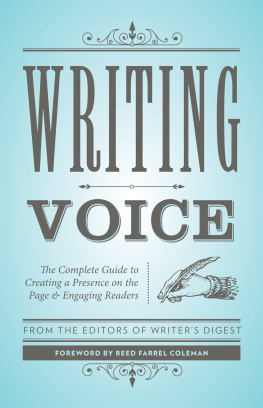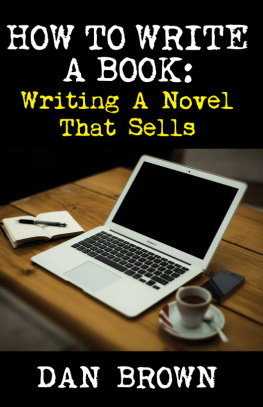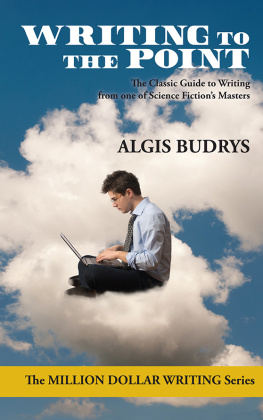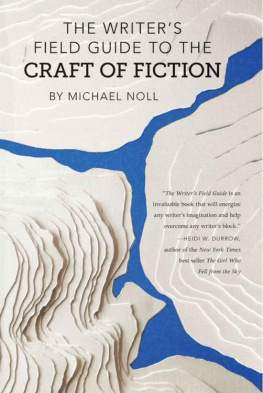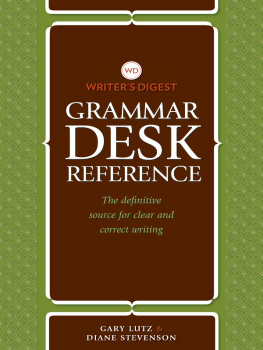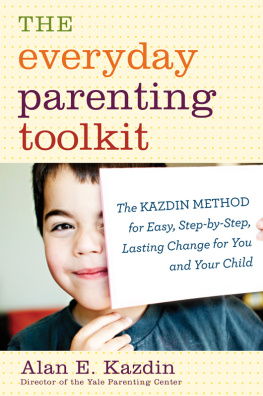Koontz - Writing popular fiction
Here you can read online Koontz - Writing popular fiction full text of the book (entire story) in english for free. Download pdf and epub, get meaning, cover and reviews about this ebook. City: Cincinnati, year: 1972, publisher: Writers Digest, genre: Art. Description of the work, (preface) as well as reviews are available. Best literature library LitArk.com created for fans of good reading and offers a wide selection of genres:
Romance novel
Science fiction
Adventure
Detective
Science
History
Home and family
Prose
Art
Politics
Computer
Non-fiction
Religion
Business
Children
Humor
Choose a favorite category and find really read worthwhile books. Enjoy immersion in the world of imagination, feel the emotions of the characters or learn something new for yourself, make an fascinating discovery.
Writing popular fiction: summary, description and annotation
We offer to read an annotation, description, summary or preface (depends on what the author of the book "Writing popular fiction" wrote himself). If you haven't found the necessary information about the book — write in the comments, we will try to find it.
Koontz: author's other books
Who wrote Writing popular fiction? Find out the surname, the name of the author of the book and a list of all author's works by series.
Writing popular fiction — read online for free the complete book (whole text) full work
Below is the text of the book, divided by pages. System saving the place of the last page read, allows you to conveniently read the book "Writing popular fiction" online for free, without having to search again every time where you left off. Put a bookmark, and you can go to the page where you finished reading at any time.
Font size:
Interval:
Bookmark:
WRITER'S DIGEST CINCINNATI
ACKNOWLEDGEMENTS
Podkayne of Mars is copyright 1963, by Robert A. Heinlein, and is published in hardcovers by G.P. Putnams Sons. The Puppet Masters is copyright 1951, by Robert A. Heinlein, and is published in hardcovers by Doubleday and Company, Inc. The sections from these works appearing in this book are reprinted by permission of the author and his agent Lurton Blassingame. Quotations from Thorns, Nightwings, and The Masks of Time are copyright 1967, 1968, and 1969 by Robert Silver-berg, and are reprinted by permission of the author and his agent Scott Meredith Literary Agency, Inc. Big Planet is copyright 1957 by Jack Vance and is quoted by permission of the author. Don't Lie to Me is copyright 1972 by Tucker Coe, published in hardcovers by Random House, and is quoted by permission of the author and his agent Henry Morrison. Legacy of Terror, Demon Child are copyright 1971 by Deanna Dwyer and are quoted by permission of the author. The Haunted Earth is copyright 1973 by Dean R. Koontz. The appearance of the original sample chapter and outline, from which it was sold, is by permission of Lancer Books.
Design: Fred Lieberman
Second printing, 1974.
Library of Congress Catalog Card Number 72-92664
ISBN 0-911654-21-6
Writer's Digest 9933 Alliance Rd., Cincinnati, Ohio 45242
Copyright 1972 by Dean R. Koontz. All rights reserved Printed in the United States of America
To
Lynne Ellinwood, whose suggestions made this
a much better book than it might have been,
And to
Robert Hoskins,
who taught me most
of what I'm now teaching,
with apologies
for beating him to the punch
with this book
A NOTE TO THE READER
This book can be valuable to the new writer. It provides insights into category fiction, offers suggestions not to be found elsewhere, and ought to save you time and rejection slips on the way to a sound, professional writing career. I will be pleased to hear from anyone who, having read the book, feels he's gained from it. However, spare me letters that say:
"You forgot to mention theme!" I didn't forget. I neglected it on purpose. The theme, the "meaning" of a story, is not something you can sit down and plan out ahead of time. Or, anyhow, it shouldn't be. Theme should grow from your characters and your plot, naturally, almost subconsciously. If you sit down to deliver a Great Message to the reader, above all else, then you are an essayist, not a novelist.
"Some of these writers whose books you recommend are not really that terribly good." I know. For the most part, I've tried to point you to the best people in each field. But, occasionally, a mediocre writer achieves such stunning success that he must be mentioned in the discussion of his genre. If, out of the hundreds of books I recommend, I steer you to a couple of bums, please realize that you can learn something from those bums, if only the taste of a large part of that genre's readership.
-"You list seven science fiction plot types, but I have found an eighth!" Okay. But it may be the only one of its kind; and with enough thought and enough familiarity with the field-Western, suspense, science fiction or whateveryou probably will find it fits into my list just fine.
"You don't show us how to make writing easy!" I know I don't. It's hard work, and it's frustrating, and it's lonely. I'm writing this to inform you, not deceive you. So set to work, and good luck!
CONTENTS
Basically, there are two general kinds of modern fiction: category and "mainstream." The first includes those stories we can easily apply labels toscience fiction, fantasy, mystery, suspense, Gothic, Western, eroticaand is called category fiction chiefly for the convenience of publishers, editors, reviewers, and booksellers, who must categorize novels to differentiate areas of interest for potential readers. The second, mainstream fiction, is anything which does not comfortably fit into one of the above categories. Some mainstream writers include Ernest Hemingway, F. Scott Fitzgerald, and, more recently, R. F. Delderfield (God Is an Englishman), Herman Wouk (The Winds of War), N. Scott Momaday (House Made of Dawn), and William Goldman (Boys and Girls Together, Soldier in the Rain).
For the new writer who has not yet chosen a creative area in which to work, category fiction (also called genre fiction) may seem to hold little appeal. For decades, college literature coursescaught up in the Realism and Naturalism which dominated American fiction until the early I960'shave ignored the best craftsmen of category fiction, often concentrating on mainstream authors with far less talent. The "better" critics in the many little literary magazines and the mass market reviewers from Time and Newsweek also have traditionally looked down their noses at category fiction. Recently, of course, the New York Times Book Review section of the Sunday New York Times has shown interest in genre writing, and many colleges have introduced courses on science fiction. Still, for the main part, critics and educators seem to think that immortality lies only with the mainstream novel, while all else is ephemeral.
This is not the case at all. Many writers who have gained some immortality, from Homer to Poe to Twain, have been category writers, men who knew how to tell a good story. Homer wrote adventure fantasy. Edgar Allen Poe wrote fantasies and mysteries. Mark Twain put most of his efforts into adventure-suspense and occasional fantasy. Undeniably, each of these men produced work that has more than a good story; but this only shows that there is no law that restricts meaning and relevance to the mainstream author. Today, for every reader who knows the mainstream author Henry James, a thousand know Twain and five thousand know Poe. The most-translated author of this century is Edgar Rice Burroughs. He is also the best-selling worldwide. Most of us would say that his stories are not what we would strive to createtoo little characterization, too much melodramabut we must admit that through Tarzan and John Carter and other characters, Burroughs has achieved that conditional immortality which is every writer's hope.
John D. MacDonald, Ross MacDonald, Daphne Du Maurier, Alistair MacLean, Robert Heinlein, Arthur C. Clarke, and Raymond Chandler are a few category writers whose works have not only sold millions of copies, but who have at last begun to receive the critics' praise. To be known and remembered, a writer's work must first be read, and it is a fact that the majority of readers will more willingly buy a well-told mystery, fast-paced suspense, or mind-boggling science fiction novel than a slice-of-life view of the Average Man. And they will do this on a continuing patronage basis. You can confirm this by looking at the best-seller list, which is nearly always 80% category fiction, or by studying Publisher's Weekly's yearly compilation of published titles, wherein the totals for category fiction regularly outstrip those for uncategorizable novels.
Since genre fiction is more widely read than mainstream, the writer's market for category work is larger than for mainstream. Publishers, like any businessmen, operate within the law of supply and demand.
The inexpensive paperback book has become the most rewarding form of publication for the average category writer. Though paperback distribution is inefficient and the major problem of the industry, good profits are possible because the total production costs of any paperback book average between eight and ten cents a copy, leaving a comfortable mark-up for publisher, distributor, and retailer, despite returns and inefficiency. Every year, for the past decade, the number of new paperback titles has increased. Most paperback fiction is category work; and about half are paperback originals, never before published in hard covers. This is, clearly, a rich field for the new writer.
Next pageFont size:
Interval:
Bookmark:
Similar books «Writing popular fiction»
Look at similar books to Writing popular fiction. We have selected literature similar in name and meaning in the hope of providing readers with more options to find new, interesting, not yet read works.
Discussion, reviews of the book Writing popular fiction and just readers' own opinions. Leave your comments, write what you think about the work, its meaning or the main characters. Specify what exactly you liked and what you didn't like, and why you think so.



